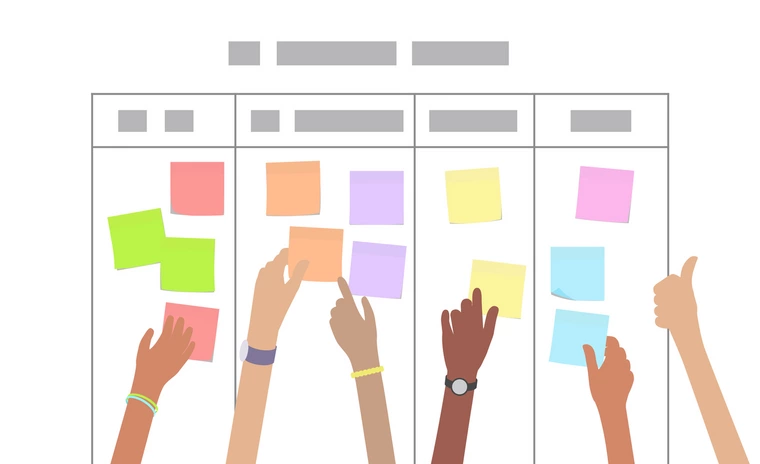In recent years, business leaders have focused on creating meaningful, long-term DEI efforts and initiatives. Giving employees a sense of belonging and a belief in equitable workplace policies increases their satisfaction, retention, and trust in the company. Unfortunately, even with DEI efforts, employers have implemented, “Employers and workers alike have split opinions on their assessment of how far companies have progressed in implementing DEI programs, with equal percentages in both groups saying their company has gone ‘above and beyond’ (43% average) vs. ‘there’s still a way to go. (43% average).” If you are an employer kicking off your DEI program, we encourage you to follow our five tips to ensure your efforts are long-term, successful, and meaningful.

Acknowledge your Blind Spots
When blindspots are left unassessed and unaddressed, your DEI efforts are undermined. The first step towards your DEI program is introspection. If you’re unwilling to examine your thoughts and unlearn biases, your DEI program will never work to its fullest potential.
Learn to Recognize Biases
Bias is unavoidable; we all have it. You must learn about your internalized biases and how to recognize them. This is a long process, so be prepared to mess up and take accountability for those mistakes. Don’t beat yourself up, though. If you have active intentions to grow, people will notice.
Be an Active Learner
Learning is not passive; you must be active in your learning journey. Seek out information and educate yourself. There are a plethora of resources available. For your program to succeed, the work must be genuine. Much like your own intentions, it will become evident if your program exists in name alone.
Making Space for People
Making space for people with DEI efforts can help enlighten people and create a work environment where people feel welcomed, heard, and valued. Creating spaces for people improves the quality of life on the job. Some suggestions for making space for people in the workplace are:
Create affinity groups
Affinity groups create safe spaces to share their experiences, common interests, purpose, and/or identity. Affinity groups ensure people feel seen, heard, supported, and respected.
Create safe spaces for discussion
Prioritize ways employees can feel comfortable connecting as humans rather than just co-workers. For example, during discussions, refer to people’s preferred names and personal gender pronouns, instill trust, assume the best intentions, and ask clarifying questions.
Create accessible safe spaces
Offer safe spaces in the office and online to ensure that everyone has equal access to secure areas, whether remote employees or in-office workers. For example, you can use a digital chat space like Slack or a video conference system, like Google Meet, so remote employees can feel included.
Giving Chances
While everyone needs to be involved in the DEI initiatives, hiring managers’ roles are especially critical. The hiring process is where chances are given, both in advertising the position and during the interviews and selection process.
Attracting the Right People
Making it clear that your company has a strong DEI program will attract diversity in your applications. People need to feel that they can flourish at your company before they are interested in applying. Without attracting the right applicants, you’ll never have the chance to practice diversity in hiring without attracting the right applicants.
Avoid Coded Language
You can ostracize good candidates by using coded language in your posting itself. You probably don’t know you’re doing it; particular vocabulary or wording can put off candidates who would fit the job well. Personality descriptions, masculine-coded words, and excessive “not required but preferred” listings will prevent people from applying.
Avoid Favoritism
When developing a hiring process for all positions, your criteria should be specific and objective to minimize bias and point to the best candidate for the job, regardless of bias. However, those criteria also need to be inflexible so that they cannot be bent to favor a particular applicant once the process has begun.
How to Address a Situation
DEI efforts are vital when addressing a situation in the workplace. Everyone has their own unique needs and accommodations. It is crucial to stay aware of your blind spots to recognize the needs of people to ensure they feel valued in the workplace. Before you try to solve any situation, ensure that you understand the person’s needs or priorities by listening with empathy and an open mind. Here are some tips to address a problem with DEI efforts:
Listen, then take action
When addressing a situation, never start without immediately telling them your perception. Allow people to express their intent without defensiveness. It is essential to thoroughly examine specific issues to determine if policy changes need to be made.
Work collectively to set clear goals
Never leave anything unspoken. With clear goals, change to the situation may be implemented.
Develop new policies Once the situation is clarified and goals are established, develop policies that align with the ethics and values of your company. After developing policies, incorporate them into employee handbooks, onboarding documents, and company resource websites. Policies must be communicated and accessible for everyone to review and understand.
Mentorship
Mentorship involves actively pairing employees with leadership and supporting their growth. Leaving any employee without someone to guide them is not ideal, but leaving an employee who may already feel isolated in the workplace because of one or more differences without a guide will leave them at a serious disadvantage. When instituting your mentorship program, keep these tips in mind:
Foster Connections
Having a mentor-mentee relationship that’s all business is a start, but encourage your employees to connect by asking questions, opening up, and being consistent. This will promote relationships that foster comfort and trust between mentor and mentee.
Build Trust
Building connections will help with this step, but absolute trust comes with time. Building trust on both sides includes consistently demonstrating respect, giving projects and feedback, giving praise, and righting any wrongs committed along the way.
Drive Each Other
As mentioned above, the mentor-mentee relationship isn’t a one-way street. Encourage both parties to be open to feedback and new ideas. This helps ensure your mentors don’t feel like the burden of the relationship is on their shoulders.
Takeaways
Cultivating a DEI program in the workplace is a process that takes time and effort. The key to a successful DEI program is to have a specific plan and devote the right resources to implementing changes that meet employees’ needs. Following the shared tips above: addressing blind spots, creating a safe space, addressing situations, giving chances, and providing mentorship will create a guideline for your workplace to kick start a DEI program.
At Online Optimism, we implement our DEI program in our workplace to work toward our vision.
**This blog was a collaborative effort between our Fall 2022 Specialists, Mariela Monterrosa Rodriguez and Scout Stanford.




